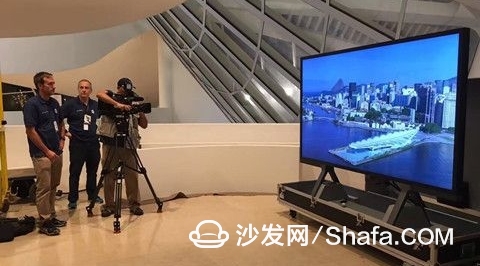
Another news about 8k comes from NHK TV station in Japan. It is reported that NHK has already begun the piloting of 8k "Ultra High Definition" television programs on August 1, including the Rio Olympic Games in Brazil that just opened. According to the plan, NHK will broadcast the opening and closing ceremonies of the Rio Olympic Games with 8K image quality, and broadcast games such as swimming and track and field. NHK also strives to start broadcasting 8K programs on the BS satellite channel in 2018 and achieve the popularity of the Tokyo Olympic Games in 2020.
According to the "Nihon Keizai Shimbun" report, the executive vice president of Sony TV Services Takashi Ichiro said that Sony will deepen cooperation with Google and work together to create an 8K ultra high definition television, positioning is for the Internet of Things era of television, and Try to put it into the market by 2020. The time for the Tokyo Olympic Games was 2020. Sony chose to launch 8K TV at this time, apparently to grasp the market opportunity of 8K.
With the opportunity of the Rio Olympic Games in Brazil, 8K TV is ready to get ready. The so-called 8K, also known as QUHD technology, resolution up to 7680 × 4320, in the display effect is 4K (UHD) display 4 times, it is 16 times the current mainstream high-definition (FHD) resolution. What kind of viewing experience is 8K? According to the relevant person in charge of the BOE, taking the live Olympic swimming competition as an example, using the 8K ultra HD product viewing competition, you can clearly see the heroic attitude of “Flying Fish†swimming, splashing water when the arm strokes, and breathing Feelings of demeanor and clear water on the face are clear, and the viewing experience is even far beyond the scene.
Currently, in addition to BOE actively deploying 8K panel lines, the upstream enterprises in China, Hisense and Changhong have launched 8K Ultra HDTVs in the first half of this year. According to data from the consulting firm IHS, by 2019, the number of 8K TVs sold worldwide will reach 1.4 million units. With the promotion of the Tokyo Olympics, this number will increase to 2.1 million units in 2020.
8K TV will also bring a pixel war to the broadcasting industry. In the future, Deep Colour and HDR technology will become new competitive highlands outside the pixel. It is not just TV stations such as NHK and BBC that lead the revolution in the broadcasting industry. Network streaming media such as Netflix and Amazon will also play a significant role in it.
But so far, 4K and 8K TV program resources are still scarce in China, and even by 2020 they will not necessarily be universal. Although the global 8K TV market is expected to fuel the Tokyo Olympics in Japan, the Chinese market may have grown slowly.
Steel structures can be used in many industries such as foundation reinforce, electric power transmission structures and tubular scaffolding, etc.
A flange can also be a plate or ring to form
a rim at the end of a pipe when fastened to the pipe. A blind flange is a plate
for covering or closing the end of a pipe. A flange joint is a connection of
pipes, where the connecting pieces have flanges by which the parts are bolted
together.
Although the word flange generally refers to
the actual raised rim or lip of a fitting, many flanged plumbing fittings are
themselves known as 'flanges':
There are many
different flange standards to be found worldwide. To allow easy functionality
and interchangeability, these are designed to have standardised dimensions.
Common world standards include ASA/ASME (USA), PN/DIN (European), BS10
(British/Australian), and JIS/KS (Japanese/Korean). In the USA, ANSI stopped
publishing B16.5 in 1996, and the standard is ASME B16.5
Steel Structures,Steel Structure Building,Classic Steel Structure,Light Steel Structures
Yixing Steel Pole International Trading Co., Ltd , https://www.yx-steelpole.com
